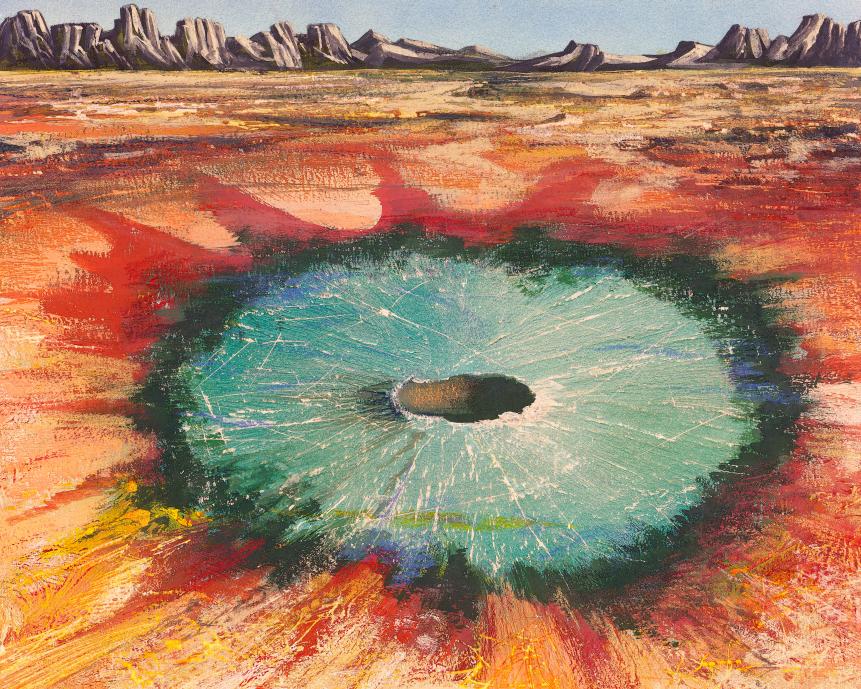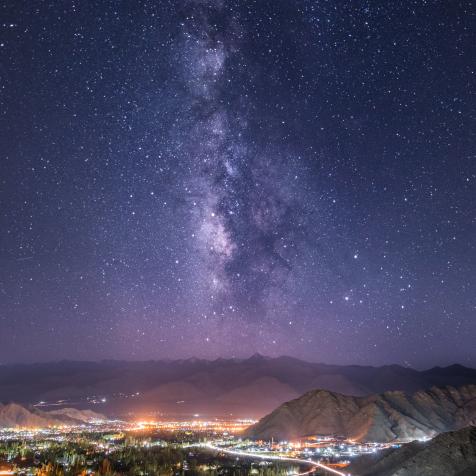
DE AGOSTINI PICTURE LIBRARY
Check out the Earth’s 800,000 Year Old Battle Wound

Scientists may have discovered the location of an ancient buried crater, a result of a meteorite that barreled into the Earth some 800,000 years ago.
It’s a good thing nobody lived in Laos 800,000 years ago, because if they did, they would have been incinerated.
Or blasted apart.
Or crushed.
Or, really, any number of horrible things. In short, a perfectly ordinary, run-of-the-mill day some 790,000 ago turned into a truly horrible apocalypse as a giant rock barreled in from the depths of space and buried itself in the crust of the Earth.
Giant space rocks generally travel at a speed somewhere around a few tens of thousands of miles per hour. I’ll spare the detailed math, because it’s not hard to imagine that such objects have a…considerable…amount of kinetic energy. And when they slam into the Earth, all that energy has to go somewhere.
Or, more precisely, it goes everywhere.
About 20% of the Earth’s Eastern Hemisphere is littered with strange, molten blobs, half made of glass and half rock. It takes a lot of heat and pressure to make blobs like that – temperatures and pressures usually only found deep in the molten core of our planet. But here they are, on the surface all willy-nilly.
For decades scientists have figured that a meteorite (AKA giant space rock) impacting our planet was responsible, but they couldn’t pinpoint its location or when it struck. This is because the Earth’s surface is refreshingly alive: plate tectonics and the combined gentle whispering of water and air erosion constantly resurface and resculpt our planet, erasing any space-born bruises as easily as we might forget a bad dream.

DE AGOSTINI PICTURE LIBRARY
Meteorite crater, drawing. (Photo by DeAgostini/Getty Images)
In other words, craters are rare. If you need a contrast, take a good long look at the Moon the next time you get the chance. No air, no water, no tectonics: loads of ugly scars.
But scientists are a crafty bunch, and a team of geologists led by Kerry Sieh at Nanyang Technological University in Singapore think they’ve found this ancient ground zero, and they published their work in the latest issue of the Proceedings of the National Academy of Sciences.
By tracing the distribution of tektites (the fancy science word for these glassy/rocky blobs that can only form as debris from a massive impact) they figured that somewhere in southeast Asia had to have been smacked pretty hard within the past million years. Further studies of the tektites, looking for subtle chemical clues to reveal their origins, pinpointed a giant lava field in southern Laos as the place where the Big Hit happened.

PNAS (Proceedings of the National Academy of Sciences of the United States of America)
The Bolaven Plateau volcanic field likely buries the impact crater that produced the tektites of the Australasian strewn field. It is the only adequately large and thick postimpact deposit on the Khorat Plateau, the largest region of plausible target rocks.
There’s no obvious crater in the giant lava field – but studies of the Earth beneath the lava field revealed an anomaly: a ring of denser-than-average rock 10 miles across.
In other words, a buried crater.
To generate a crater like that and toss tektites across a tenth of our planet, the giant rock from outer space had to be a little over a mile wide, and at the moment of impact released about 47,000 megatons of energy. To put that in perspective, the largest nuclear bomb ever, the Tsar Bomba, has a yield of…50 megatons.
That’s enough energy to not only wipe a city off the map, but to completely vaporize it and a couple miles’ worth of ground along with it.
Like I said, for any creatures living in Laos 800,000 years ago, it was a very bad day.



















